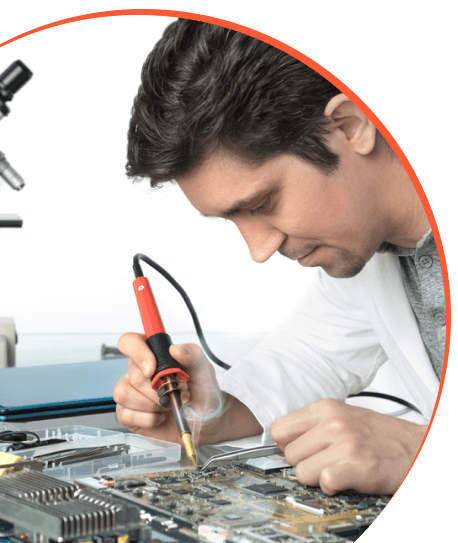Find Your Edge in VLSI: Best Courses for ECE Students to Build Real Careers
When you walk out of college with an ECE degree, you carry a head full of concepts—logic design, microprocessors, VLSI basics—but the real world feels like a different planet. Suddenly, everyone wants hands-on experience with tools you’ve never seen. Job listings ask for projects that no classroom lab could give you. It’s frustrating to feel prepared on paper but not ready for the workbench.
This is where most students get stuck. The gap between what’s taught in classrooms and what the industry expects can be wide. Companies want graduates who can open up an EDA tool and start working. Students, on the other hand, struggle to find reliable training that isn’t just another “theory-heavy” course.
That’s why ChipEdge was created — to bridge that exact gap. We focus on industry-relevant VLSI courses that help students move from theory to practice. If you’ve been searching for the best courses for ECE students, this is where that search can end.
Core Tracks You Can Choose From
Each student’s interests and strengths are different. Some like working with circuits and layouts. Others love debugging. Some want to specialize in something niche. We have structured our programs into three core learning tracks that map to actual job roles in chip companies.
Choosing the Right Learning Path
Not everyone takes the same route. Some students start with verification and add physical design later. Others begin with physical design because they love circuits. The key is to align your learning with your interest.
Here’s a simple way to decide:
- If you’re excited by how circuits are transformed into real chips — working with layouts and making designs ready for fabrication — start with Physical Design (PD)
- If you like debugging, testbenches, and logic, pick Verification.
- If you’re curious about how chips are tested on manufacturability even before fabrication and want to master a high-demand skill, choose Design for Test (DFT)
- If you’re aiming for a broader skillset, combine two tracks — for example, DV + DFT.
Many students at ChipEdge do exactly that: they build a strong base with one course and then layer on a second. It creates a profile that stands out to recruiters.
Typical roadmap for learners
- Refresh your digital and RTL basics.
- Choose your main track.
- Start hands-on tool sessions and structured labs.
- Build your capstone project.
- Prepare for interviews with mock sessions and portfolio reviews.
- Get placement support from ChipEdge’s partner network.
By following this structure, you’re not just learning — you’re building a clear route to an actual job. That’s what makes these among the best courses for ECE students who want to work in core VLSI.
Beyond the Curriculum: What Makes ChipEdge Different



Real Tool Access: You get Synopsys licenses and VPN access to labs so you can practice from anywhere.

Placement Support: You’ll receive help with resume building, mock interviews, and introductions to hiring partners.

Flexible Learning: Weekend batches make it easy to learn alongside college or work.

Project-Centric Learning: You’ll complete real chip design tasks, not just watch slides.
This ecosystem is what allows students to transition from academic knowledge to job-ready skills. Instead of learning in isolation, you work in the same way professionals do in design houses.
Why ECE Students Trust ChipEdge
The courses are designed around real hiring needs. Instead of focusing only on what’s “nice to know,” they zero in on what employers actually ask during interviews and need on the job. That’s why many learners from ECE backgrounds land their first roles in physical design, verification, or DFT soon after completing the program.
And because the tools and workflows mirror actual industry setups, the learning curve once you get placed is much shorter. You step in already familiar with flows, terms, concepts, and debugging methods.
For students who’ve spent years learning theory in classrooms, this can be the turning point — from simply understanding concepts to actually building something that works.


Take Away
Choosing the best courses for ECE students isn’t just about finding a training program — it’s about finding a bridge between where you are and where the industry wants you to be. ChipEdge’s learning environment is designed to make that bridge real.
If your goal is to work in chip design, verification, or test engineering, this is a solid place to start — with tools, mentors, and a structure that actually works.

Enquire Now
FAQ
If debugging and logic excite you, start with Design Verification. If circuits and layouts are your thing, pick Physical Design. Those who want to stand out often combine two tracks for a stronger profile.
Yes. Many students begin while finishing college. Pre-course brushing modules are provided so you can catch up quickly.
Yes. ChipEdge provides Synopsys tool licenses and VPN-based lab access so you can practice hands-on, just like an engineer in a semiconductor firm.
Absolutely. The placement team offers resume guidance, mock interviews, and connects you to hiring partners. Support continues until you secure a role.
Yes, many learners do this strategically. For example, DV + DFT is a common combination that increases job opportunities in both design and testing roles.
 Lets Connect
Lets Connect



 Sign up today
Sign up today






